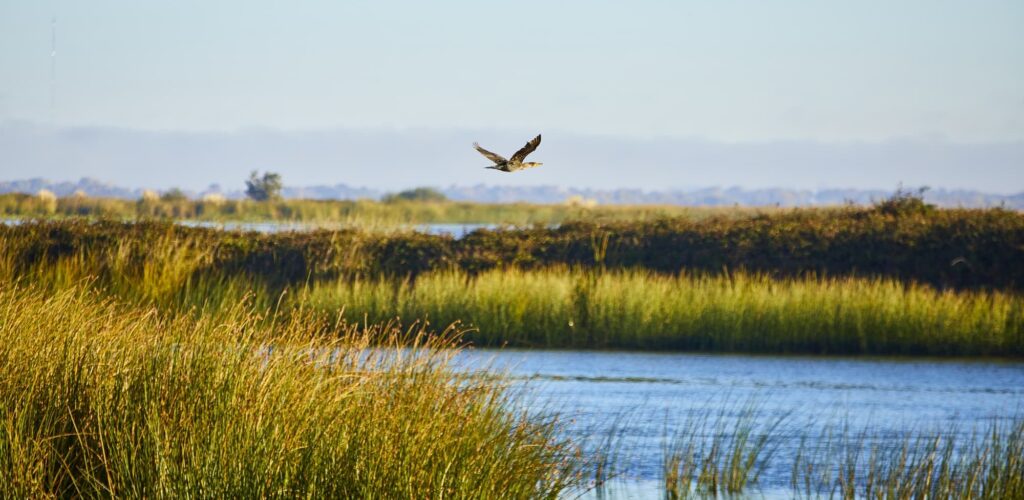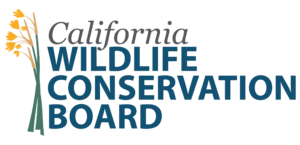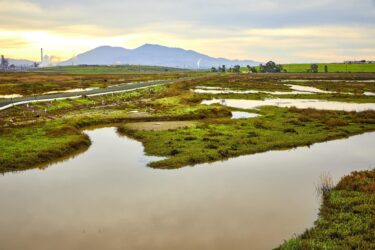Hoover Ranch
![]() Hoover Ranch project is one of the most significant conservation projects underway in northern California's Bay Delta region. John Muir Land Trust (JMLT) is leading efforts to acquire, restore, and permanently protect this 600-acre property on Bethel Island in Contra Costa County.
Hoover Ranch project is one of the most significant conservation projects underway in northern California's Bay Delta region. John Muir Land Trust (JMLT) is leading efforts to acquire, restore, and permanently protect this 600-acre property on Bethel Island in Contra Costa County.
The Bay Delta environment is in crisis. More than 90% of native wetlands have been lost due to human activity, and climate change is making the ecosystem even more fragile. By protecting Hoover Ranch, we can begin to reverse these trends and safeguard the ecosystem that supports 750 plant and animal species. This conservation initiative will have far-reaching benefits for the region's economic vitality and the preservation of natural resources.
The Bay Delta: A Conservation Imperative

Few conservation priorities are as important to Bay Area residents as restoring and protecting the health of our San Francisco Bay waters and the rivers that flow into them—especially the Sacramento-San Joaquin Delta waters. As an economic and environmental resource, the Bay Delta has few equals.
- The Delta drains more than 40 percent of California and forms the largest estuary on the western coast of the two Americas.
- Nearly half of California's migrating waterfowl and shorebirds and two-thirds of the state's spawning salmon pass through this vital habitat for 750 animal and plant species, including more than 40 aquatic species.
- Salt marshes along the Bay provide essential nutrients, refuge, and nursery habitat for fish species at risk. Some of these are found nowhere else on Earth.
- 25 million Californians depend on the Delta for drinking water. The system supplies water to millions of acres of farmland where nearly half of the country’s produce is grown.
- The health of the Bay Delta is crucial for wildlife preservation, the state’s economy, public welfare, and our quality of life.
Why Hoover Ranch Matters
Situated in the heart of the Bay Delta, Hoover Ranch holds immense value for its location alone. This privately-owned property on Bethel Island, spanning nearly two miles of shoreline, serves as a sanctuary for fish, birds, and wildlife. Birders flock to witness the greater sandhill cranes, snow geese, and nesting species like the loggerhead shrike. Migrating salmon rely on its shores each season. By protecting Hoover Ranch, we preserve the serenity, habitat, and unique character of this cherished island community.
An Ambitious Plan
One of the greatest threats to the Delta is subsidence—sinking that is caused by the drainage of wetlands and the subsequent oxidation of peat soil. This harmful process releases carbon dioxide and has caused areas, including parts of Hoover Ranch, to sink as much as 12 feet below sea level. To address these challenges and enhance climate resilience, JMLT's restoration plan for Hoover Ranch focuses on nature-based solutions. Key elements include:
- Establishing diked wetlands, riparian woodlands, and preserving sand dunes.
- Enhancing habitat for native wildlife, including special status species.
- Actively stewarding the land through monitoring and maintenance.
- Raising surface and groundwater levels to reduce levee failure risk.
- Reducing carbon emissions through sequestration and exploring carbon markets.
- Increasing resilience to natural disasters.
- Creating new access for passive recreation while preserving Bethel Island's rural character.
This comprehensive plan will establish wetlands, expand riparian woodlands, reverse subsidence, create flourishing habitat for native plants and animals, and reduce carbon emissions. It will protect the interests of human communities who reside, work, and recreate in this region of unique natural beauty.
Hoover Ranch is a bird watching paradise. While biological assessments of the property are still underway, here is a sampling of the birds that call Bethel Island home.
Hoover Ranch FAQ
JMLT works with willing landowners who wish to conserve much-loved family farms and ranches in their natural state. Once acquired and protected in perpetuity, these places are carefully managed by JMLT and open to the public for passive, low-impact recreation.
JMLT has acquired Hoover Ranch. We are in the early stages of informing the community about our plans and identifying funding for planning, design, and ultimately, the implementation phase to restore wetlands and riparian woodlands while ensuring light public access. Funding to purchase and restore Hoover Ranch comes from a variety of sources, including federal, state, and local agencies; foundations; private individuals; and institutions.
The Hoover Ranch acquisition, restoration, and public access project is made possible by our project partners and the generosity of JMLT donors and funders, including the Gordon and Betty Moore Foundation, the Sacramento-San Joaquin Delta Conservancy, and the California Wildlife Conservation Board.
Arguably, there is no organization better suited for the Hoover Ranch project. Our area of focus is Contra Costa and Alameda counties. We have a record of successful conservation spanning three and a half decades. As a fully accredited land trust, JMLT has the expertise needed to negotiate the purchase, raise the funds, and then successfully steward and manage the property as a wildlife refuge and natural open space for human recreation and enjoyment. We work closely with agencies and partners needed to get the job done. Working in the Bay, Delta, and Rivers of northern California is a hugely important strategic priority of ours. Pacheco Marsh is an internationally known project along Suisun Bay.
At 600-acres, Hoover Ranch might be the largest undeveloped parcel of land in Contra Costa County. One look at its location on a map reveals its importance as a conservation priority in the Bay-Delta ecosystem.
We’re still determining the full cost. See the Costs of Conservation to learn about the many expenses that are associated with a land conservation project. Especially important are appraisals, environmental assessment reports, and detailed plans for what happens after acquisition. You’re hearing about the Hoover Ranch project at a stage earlier than when we might normally announce our intentions. That’s because we are especially interested in notifying and hearing from residents of Bethel Island and other interested parties. We’ll announce a campaign goal and deadline soon.
JMLT has received enthusiastic support for the Campaign for Hoover Ranch. We would love to hear from you. Please email JMLT at info@jmlt.org and include Hoover Ranch in the subject line.
The acquisition and restoration of Hoover Ranch is made possible through the generosity of our funding partners and individuals who contribute to John Muir Land Trust.



CC Goldfields 🌻
A Golden Surprise Blooms Along Highway 4
Discover the remarkable conservation success story of the endangered Contra Costa goldfields, where golden blooms create a dazzling display each spring in the heart of vernal pools.
From Abundance to Endangered
Rare Beauty
The Contra Costa goldfield (Lasthenia conjugens) is a dazzling display of golden blooms, part of the aster family. These vibrant annuals reach heights of 4 to 12 inches with light green, feathery leaves.
Critical Status
Only 13 populations are known to exist across four counties in California. JMLT stewards the last-known stand of this endangered species within Contra Costa County.
Unique Habitat
Thriving in vernal pools beside bustling Highway 4, this surprising haven demonstrates nature's resilience in the most unexpected places.
Conservation Impact
JMLT's Conservation Strategy
Conservation Easement
JMLT acquired a 30-acre conservation easement east of Hercules, where goldfields population had dwindled dramatically.
Innovative Management
The introduction of cattle grazing proved key to recovery, suppressing invasive grasses and creating space for native wildflowers to flourish.
Enhanced Grazing
10 yearling heifers introduced in spring to compete with faster-growing grasses, alongside 10 bulls that graze in fall. The extra munching is working!
Collaborative Conservation
UC Berkeley Partnership
JMLT partners with UC Berkeley Botanical Garden to propagate and collect seeds, with expert horticulturalists helping plant seeds and plugs grown in their greenhouse.
University of Colorado
Collaboration extends to University of Colorado at Boulder, ensuring the lineage is preserved in their seed bank for future studies on population dispersal.
Annual Monitoring
JMLT conducts annual biological assessments to monitor the health of the goldfields population and track conservation progress.
Rich Ecosystem
Beyond the goldfields, the preserve encompasses vernal pools and a section of Rodeo Creek, creating a rich habitat teeming with native life.
Amphibians
Home to the threatened California red-legged frog and other amphibian species that depend on the preserve's wetland habitats.
Bird Life
A variety of birds including mallards, great egrets, and belted kingfishers find refuge in this diverse ecosystem.
Mammals
Small mammals like coyotes, raccoons, and various rodents call this preserve home, creating a complete food web.
Witness the Golden Spectacle
Spring is the prime time to witness these golden gems in bloom. Join JMLT for wildflower hikes and experience this ecological success story firsthand.
View Events Calendar


